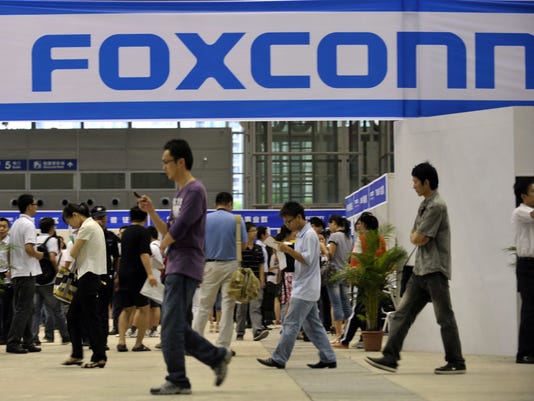
Eighteen months ago, Apple joined the Fair Labor Association and released the names of its suppliers. It was an unexpected move by new CEO Tim Cook. Under Steve Jobs, the company had cultivated close and often monogamous relationships with its Asian suppliers and had kept quiet about them. When Foxconn suffered a rash of suicides in 2010 and iPhone 4 supply problems later that year, Apple stood by its manufacturer but said little. Their partnership was based on trust – a prized quality in China, and better protection than any contract – which required that neither company do anything that might jeopardize the other's business.
The first sign of change came in mid-2011, when Cook (as acting CEO) began to diversify Apple's supply chain, sending some iPhone assembly to one of Foxconn's competitors, Pegatron. Then, after Apple's suppliers' names were released in January 2012, the New York Times led a wave of critical investigations into working conditions. Apple fought the bad PR by initiating an independent audit of several Foxconn facilities – in essence, throwing its supplier under the bus.
Predictably, the developing world manufacturer failed to live up to developed world standards, and it was forced to make damaging concessions. CEO Steve Gou promised that Foxconn would double wages by the end of 2013 and cut overtime hours by more than half. Many workers were unhappy; they were there to make money, they said, and they seemed to realize better than anyone how these changes threatened an ecosystem that everyone depended upon.
Working conditions aside, Apple also tried to clean up its suppliers in other ways. A coalition of environmental NGOs issued a report last January stating that "(i)n 2012, Apple went from being evasive and in denial to a point where they are now working with different stakeholders to push suppliers to correct environmental problems." This included a system of audits throughout the supply chain and a general move toward transparency.
And then the iPhone 5 was released. It was a smash hit, selling 5 million units in the first weekend – and suffering from supply problems almost immediately. Foxconn complained that the device was complicated and difficult to assemble, and customers complained about receiving scuffed and scratched units. Having pushed for more humane working conditions, Apple now demanded more supply. Workers came under pressure, and in early October, several thousand went on strike after being forced to work during the national holiday. The problem was overtime; workers expected it in return for giving up their vacations, but Foxconn had promised critics that it would reduce overtime hours. The company solved this Gordian Knot by simply pretending that the holiday didn't exist.
The situation wasn't helped by a labor shortage that had plagued Foxconn throughout the second half of 2012. The shortage was often blamed on the manufacturer's bad press, but employees offered a different explanation. In December 2012, the Wall Street Journal reported that "a majority... work 10 to 15 overtime hours and would prefer more, having left their distant homes to make money." One worker argued that, in the face of further overtime limits, "a lot of the more experienced people from technology production lines will leave."
Tim Cook's gambit turned out to be a bad one. Transparency resulted in even worse press, and it's likely that shorter working hours played a role in the iPhone 5's short supply. A third source of friction was money; Foxcon and Apple agreed to share the costs of workplace improvements. Neither company has elaborated on these subsidies, but they loom large in Apple's recent decision to send more manufacturing to Pegatron, which is reported to have secured the contract for the next-generation iPad Mini and a (rumored) budget iPhone. The Journal notes that "Foxconn's cost advantages from scale have waned as it works to improve factory conditions... (Pegatron) has largely escaped the laserlight focus that has forced Foxconn to increase wages and make changes to its labor practices."
So much for trust. Today, Foxconn is looking for a life beyond Apple. The company has diverged into television sets and smartwatches and is threatening to enter the mobile phone business on its own.
This divorce spells trouble for Apple. Cupertino's close relationships with its suppliers not only ensured a high standard of quality control, but they also allowed it to design better products. Foxconn was guaranteed Apple's business, so it had no qualms about structuring itself around Apple's needs. The iPhone-maker benefitted from the cost savings of outsourcing while maintaining all the advantages of a dedicated manufacturing facility. A diversified supply chain might reduce costs further but will also dent the effectiveness of Apple's design teams – a trade-off that Hewlett-Packard and Dell made years ago... and that they now probably regret. Perhaps worse, Apple now finds itself with one less friend, in a part of the world where friends are everything. LINK


